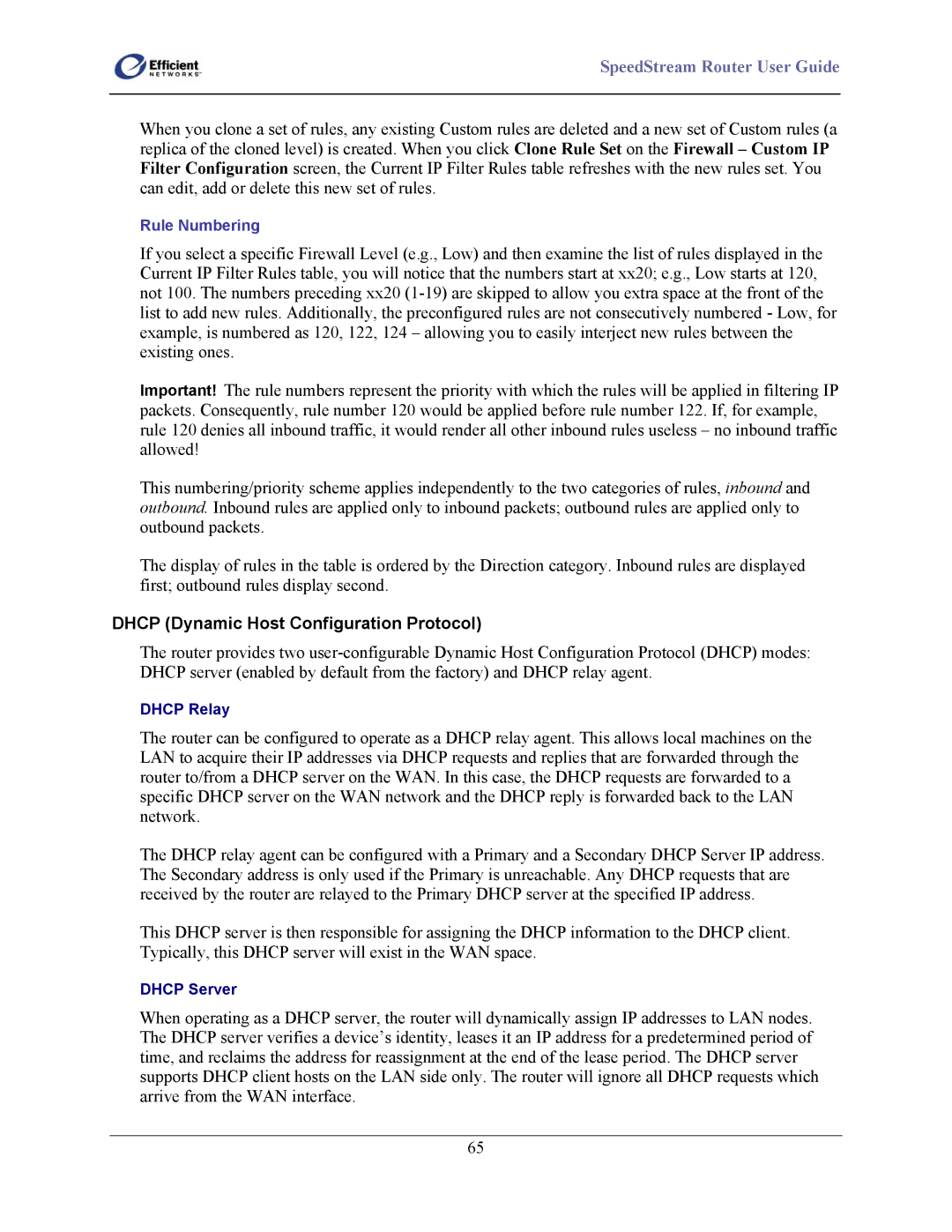
SpeedStream Router User Guide
When you clone a set of rules, any existing Custom rules are deleted and a new set of Custom rules (a replica of the cloned level) is created. When you click Clone Rule Set on the Firewall – Custom IP Filter Configuration screen, the Current IP Filter Rules table refreshes with the new rules set. You can edit, add or delete this new set of rules.
Rule Numbering
If you select a specific Firewall Level (e.g., Low) and then examine the list of rules displayed in the Current IP Filter Rules table, you will notice that the numbers start at xx20; e.g., Low starts at 120, not 100. The numbers preceding xx20
Important! The rule numbers represent the priority with which the rules will be applied in filtering IP packets. Consequently, rule number 120 would be applied before rule number 122. If, for example, rule 120 denies all inbound traffic, it would render all other inbound rules useless – no inbound traffic allowed!
This numbering/priority scheme applies independently to the two categories of rules, inbound and outbound. Inbound rules are applied only to inbound packets; outbound rules are applied only to outbound packets.
The display of rules in the table is ordered by the Direction category. Inbound rules are displayed first; outbound rules display second.
DHCP (Dynamic Host Configuration Protocol)
The router provides two
DHCP Relay
The router can be configured to operate as a DHCP relay agent. This allows local machines on the LAN to acquire their IP addresses via DHCP requests and replies that are forwarded through the router to/from a DHCP server on the WAN. In this case, the DHCP requests are forwarded to a specific DHCP server on the WAN network and the DHCP reply is forwarded back to the LAN network.
The DHCP relay agent can be configured with a Primary and a Secondary DHCP Server IP address. The Secondary address is only used if the Primary is unreachable. Any DHCP requests that are received by the router are relayed to the Primary DHCP server at the specified IP address.
This DHCP server is then responsible for assigning the DHCP information to the DHCP client. Typically, this DHCP server will exist in the WAN space.
DHCP Server
When operating as a DHCP server, the router will dynamically assign IP addresses to LAN nodes. The DHCP server verifies a device’s identity, leases it an IP address for a predetermined period of time, and reclaims the address for reassignment at the end of the lease period. The DHCP server supports DHCP client hosts on the LAN side only. The router will ignore all DHCP requests which arrive from the WAN interface.
65
